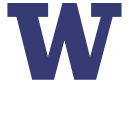Each month, RowingRelated interviews an insider about a particular rowing city, to get an impression of what it’s like to train there and be part of the rowing community. This month, we spoke to University of Washington men’s head coach Michael Callahan about his love for the PNW.
“One thing that comes to mind immediately when I think of Seattle and the Pacific Northwest,” begins Callahan, “is the reason why we call it ‘Rowtown USA’—it’s just always had this town feeling. It’s always felt like a hometown, like a neighborhood. And the Northwest, especially Lake Washington and its waterways, it’s a neighborhood of rowing. People are connected to each other here—it’s not satellite boathouses everywhere.”
That’s at least in part because of the long legacy of the sport in the area, thanks to Hiram Conibear, and the legendary George Pocock.
“Of course, Conibear was kind of the ‘founding father’ of rowing here at the University, but Pocock was sort of the spiritual leader. It [rowing] ties people together here in the Northwest [indeed, even Bill Walton knows that much]. It’s blue collar, but high standard. And that radiates throughout the area. People might be well educated, but they’re humble. They’re grounded, and rooted here. That’s the kind of people who live here.”
The geography is also a rare advantage for rowing, in terms of the University’s proximity to the sport, as well as the vast stretches of row-able waterways.
“We’re surrounded by water on three sides. You can be virtually anywhere on campus and roll down to the [Conibear] Shellhouse in 10 minutes.”
He’s not kidding—the boathouse is right next to the football stadium, and flanked on the opposite side by the baseball stadium. Just across a walking bridge over the road is the heart of campus.
“The city itself also has a maritime tie. People always say, oh Seattle I hear it rains so much, but I always think to myself no, the water is one of our greatest assets, whether it’s the rain, to the snow, to the glaciers on the mountains that surround us, to our lakes, and Puget Sound itself. The city is built on the water, with bridges connecting the various parts—it’s a maritime city. It grew from people coming north for logging and transporting logs on schooners; people coming here for the gold rush, taking ships up to Alaska; it grew from Scandinavian fishermen arriving and settling in Ballard.”
He continues: “So, people see the maritime side of the city. They see everything from crab boats to rowing shells, rowing through their city constantly. That’s true of other great rowing cities in this country—they have a river or some other great waterway through the central part of the city, so that people see our sport. We are incredibly visible here.”
That, coupled with the fact that Seattle is still a relatively ‘young’ city, has helped Husky Crew’s imprint remain part of the city’s psyche.
“We didn’t have professional sports here for a long time. So, Husky Crew and Washington Husky football were kind of the main shows in town for a very long time. The city grew up around cheering for the Huskies. We were almost daily news, in the Seattle Post Intelligencer, and The Seattle Times.”
And even now, the Huskies are a fairly regular feature in the Times, especially when it comes time for Opening Day. Add the success of The Boys in the Boat (and the excitement about the upcoming feature film) to that mix, and you start to understand why rowing really is a thing in Seattle.
“I can’t even tell you. Now, there are thousands of people who come here every year to look at the [1936] boat. [It’s hanging from the rafters upstairs at Conibear Shellhouse.] To look at the medals, to look at the oars. I’ve got Joe Rantz’s Olympic jersey hanging above my computer—I’m looking at it right now.”
So what to do first if you’ve never been to Seattle before?
“Well, no. 1 is landscapes. I mean, the natural beauty here is incredible, from the mountains, to the waterways, to Puget Sound, the lakes.”
“Seattle also has incredible food. The restaurants here—everything from seafood to farm-to-table, organic, etc. It’s also a very progressive city, so there’s a big emphasis on freshly grown, healthy—Pike Place Market is a good place to get a sense of that.”
Editor’s note: The coffee is good, too. (No, I’m not talking about Starbucks.)
“To me, it’s a very outdoorsy, adventurous city. Most people, I’d say oh you’ve got to go for a hike, go skiing, just get outdoors and see its natural beauty. And that’s the thing about Seattle—you can be in downtown Seattle, like I was on Sunday, and it’s 47 minutes until you’re skiing. Then, you’re back by 3pm, you can go to a park, go to an amazing restaurant, or a show—Seattle also has a great music scene.” //RR
For more, including an interview with Olympic silver medalist and Husky alum, Conlin McCabe on his recent world record erg, subscribe to RowingRelated.







